Japanese-American Representation In Classic Hollywood Cinema
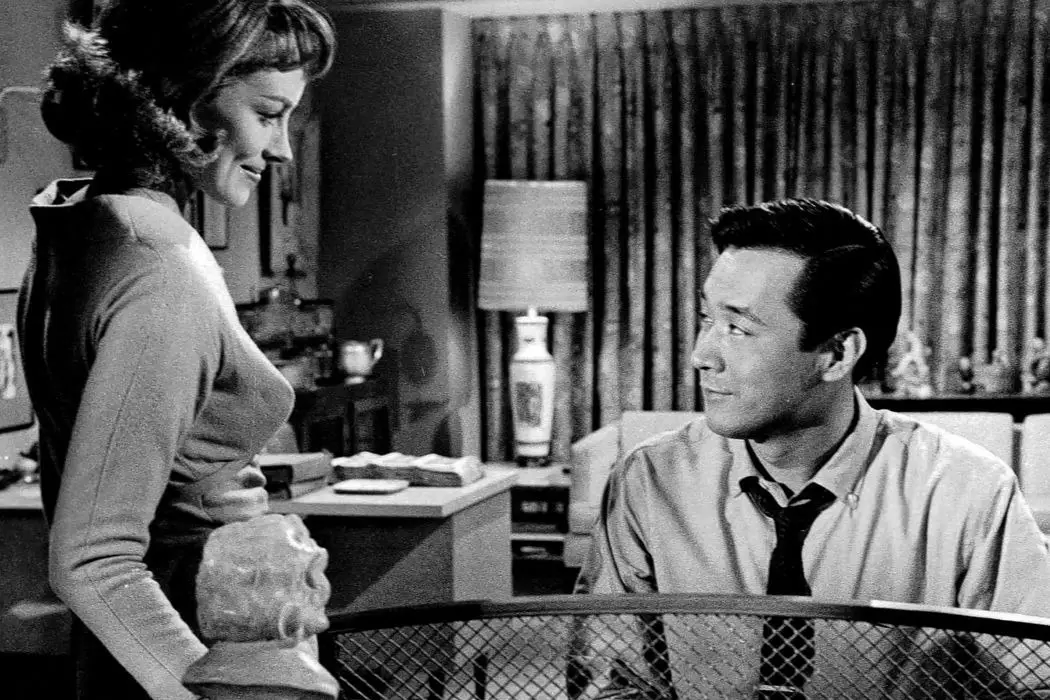
Tynan loves nagging all his friends to watch classic movies…
Images are powerful as is representation. Based on my ancestry, I thought it would be meaningful to highlight some movies I have been drawn to for their various portrayals of Japanese-American characters.
I only realized a couple of days ago that May is designated Asian/Pacific American Heritage Month. There was a tagline on the website run by the Library of Congress reading “Celebrate! Where Asia Meets America.” That’s what I will try to do through a brief overview of Japanese-American representation, particularly in post-war Hollywood.
For obvious reasons, Mickey Rooney in Breakfast at Tiffany’s has been left on the cutting room floor. I also didn’t feel a need to include movies like Geisha Boy, You Only Live Twice, or Thoroughly Modern Millie in my conversation. Those are for another time.
In revisiting this subject, some overarching takeaways include how the intersection of Japanese and American culture often comes in the context of war dramas or service comedies, where interracial romances and cross-cultural hijinks could occur. But these are not the only stories.
After the 1940s, the Japanese-American experience was also closely tied to the Internment from 1942-46 and the residual discrimination during and after the war. For some helpful clarification, in his anecdotal tableau called Infamy! Richard Reeves includes the following excerpt:
“There can be some confusion about the use of the word Japanese. Obviously, it has more than one meaning when you are writing about WWII. It describes the citizens and soldiers of the Empire of Japan, the enemy. In the United States, it was also used to identify both American-born citizens and their alien parents and grandparents who were born in Japan and not allowed to apply for American citizenship because of their race.”
It’s this latter group I’m most intrigued by. There should be space to dialogue about yellowface or the demonized caricatures from wartime propaganda. However, I want to see beyond that and cut through the refuse to something more — to make this into a celebration.
For some brief context about me, I am half Japanese-American. My father’s parents were both born and raised in the L.A. area. They were interned in two separate camps outside of California. Being fourth-generation Japanese and fairly far removed from my ancestry, I worked in Japan for two years and got to learn more about my roots. A highlight was returning to the town my family immigrated from at the turn-of-the-century.
These are only minor footnotes, but they color why I am so fascinated by these types of portrayals because they help me to comprehend even a little bit about how my family fits into this complex patchwork of American history. Movies are a major part of our collective experience and how we make sense of the world. Please join me in this celebration.
Daisy Kenyon (1947)
The main attraction for seeing this movie is the love triangle made up of Joan Crawford, Dana Andrews, and Henry Fonda. However, in a meaningful subplot, Andrews‘ attorney takes on a case in defense of an unseen Japanese man named Noguchi, who lost his land due to the internment (a scripted court scene was vetoed by the Production Codes). It was one of Otto Preminger‘s many tussles with industry gatekeeper Joseph Breen. Regardless, to my knowledge, it’s the first movie to even acknowledge the nation’s culpability.
The Clay Pigeon (1949)
I’ve looked high and low for this lowly B picture directed by Richard Fleischer and still have not seen it. Although it, no doubt, taps into stereotypes of the Japanese held-over from wartime propaganda, it’s actually based on a true story about an ex-G.I. who noticed his old POW camp guard in an L.A. department store. Look it up! Thankfully, Richard Loo would get a more sympathetic character a couple of years later. Supposedly there is also a sympathetic Nisei widow (Marya Marco) whose husband fought in the famed 442nd Infantry Division.
The Steel Helmet (1951)
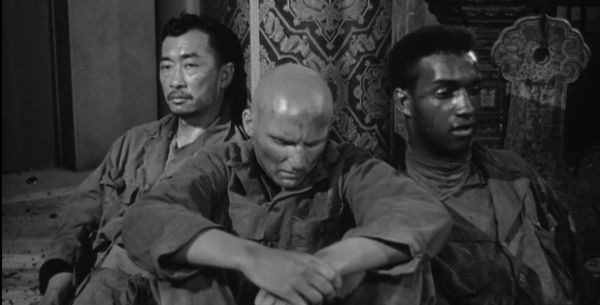
The Steel Helmet feels like an uncompromising film set in the paranoia-filled fog of war that was Korea. Sam Fuller fashions the grounds of the Griffith Observatory into a gritty, totally immersive picture with time enough to come to terms with the Japanese Internment through the character of Sgt. Tanaka (Richard Loo). The veteran soldier stands by his country even as the enemy whispers in his ear about American’s horrible treatment of their own citizens. It’s only a short aside but provides a powerful statement I have yet to forget.
Go for Broke! (1951)
It would be a conventional war drama, and it initially pales in comparison to the Robert Pirosh, Van Johnson-helmed Battleground (1949). However, what makes it an important historical touchstone is its memorializing of the 442nd Infantry Division, including a host of real-life veterans such as Lane Nakano who fought alongside his brother overseas. This type of substantial representation of Nisei makes it fairly extraordinary, especially so soon after the war.
Japanese War Bride (1953)
Japanese War Bride sounds like a stereotypical narrative of a G.I. (Don Taylor) bringing home an exotic Asian wife (Shirley Yamaguchi). However, there are actually deeper themes considering the pervasive bigotry toward Japanese and Japanese-Americans after the war. There’s still a lot of persistent hurt on both sides — for the Issei who were interned and lost their farms and others who lost their loved ones at Pearl Harbor and in the Pacific. Lane Nakano makes another short appearance in this groundbreaking romance.
Bad Day at Black Rock (1955)
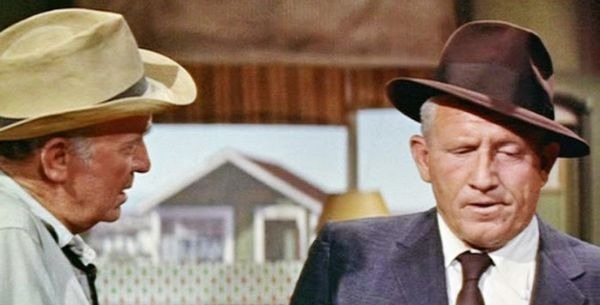
Robert Ryan is back to his old tricks playing a narrow-minded racist — this time in a small town with a deep, dark secret. This tension-filled thriller pits a steady, enigmatic Spencer Tracy against all of Black Rock because they are all complicit. Their sins involve a local Japanese man named Komoko whose son fought with honor overseas during WWII. Though unseen, they play a crucial role in this film’s thematic undercurrents — a statement unto itself.
House of Bamboo (1955)
This is another Sam Fuller film that was rather unprecedented as one of the first American releases to be shot on-location in Japan. It deals in some of the expected stereotypes, but Robert Stack and Shirley Yamaguchi make a striking couple as their romance plays out against the backdrop of expatriate corruption led by Robert Ryan. Its images are amazing even as they make us come to terms with the newfound links between Japan and American capitalism.
No Down Payment (1957)
Martin Ritt‘s socially conscious portrait of 1950s suburbia is a far cry from Ozzie & Harriet or Father Knows Best. It does a stellar job of teasing out the hypocrisies behind the rows of white picket fences. Iko (played by Aki Aleong) is a Japanese-American employee for a local store run by Pat Hingle. He wants to move his family closer to improve his taxing commute. However, instant resistance goes up all around as WWII vets and churchgoers alike shudder to think of their neighborhood being overrun.
Sayonara (1957)
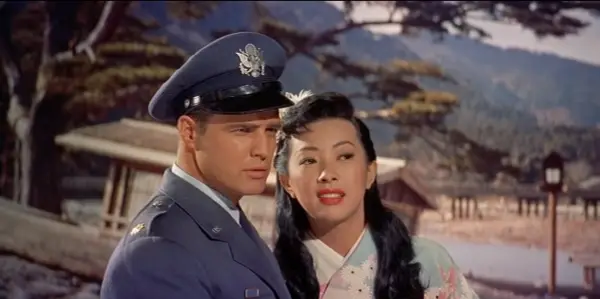
This lengthy Technicolor looker is a showcase for two complementary romances. Red Button‘s flyer is adamant about setting up a life for himself with his Japanese wife (Miyoshi Umeki), disregarding opposition on all sides. One of the initial detractors is Marlon Brando — a southern boy who nevertheless becomes enchanted by an elegant beauty (Miiko Taka). As a complicating side note, in real life, the dazzling Taka was born in Seattle and interned at Gila River in Arizona during WWII.
The Crimson Kimono (1959)
Blending the best of Sam Fuller‘s gutsy, no-nonsense street corner crime drama with a surprisingly lucid dialogue about Japanese-American identity — especially for the time — The Crimson Kimono focuses on a friendship between two detectives (Glen Corbett and James Shigeta). Their latest case takes them through the domiciles of L.A.’s Little Tokyo culminating in a chaotic crescendo during the annual Nisei Week Festival. What’s more, Shigeta winds up getting the girl (Victoria Shaw)!
Hell to Eternity (1960)
Phil Karlson‘s biopic on Guy Gabaldon feels wildly uneven. It’s part family drama, part war movie, with a couple of salacious interludes. But it’s in the opening scenes where we get a view into an unprecedented world. During his youth, he was taken in by a Japanese-American family (actually Go For Broke‘s Lane Nakano). After Pearl Harbor, he enlists and proceeds to make a name for himself in the Pacific, using his Japanese skills to coax hundreds of enemy soldiers into surrender, earning his nickname: The Pied-Pier of Saipan.
Cry for Happy (1961)
It’s overlong and at best a flimsy sitcom episode about a group of sailors (led by Glenn Ford and Donald O’Connor) who convert a geisha house into an orphanage to save their necks. However, for our purposes, James Shigeta plays one of their mates who doesn’t speak a lick of Japanese. It also constitutes a Sayonara reunion featuring Miiko Taka and Miyoshi Umeki. Japanese-American Robert Kino plays a beret-wearing Japanese filmmaker trying to jumpstart the local film industry.
Bridge to the Sun (1961)
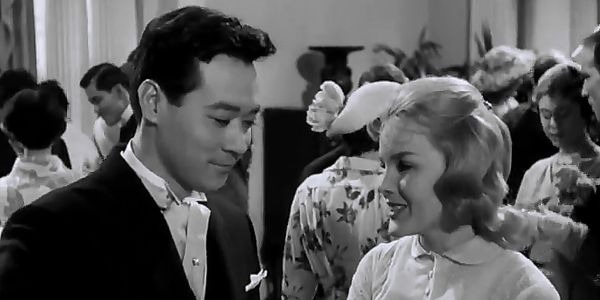
Based on another true story, a Japanese diplomat (James Shigeta) and a southern belle (Carroll Baker) meet during the 1930s and wed. However, the proclamation of war between the United States and Japan throws their lives into tumult. Between their affectionate courtship, cultural conflicts, and a war tearing their union apart at the seams, they represent how love can bring people and nations together in troubled times. Generally forgotten today, it’s quite an extraordinary story.
Flower Drum Song (1961)
It’s a bit of a cheat because this Roger & Hammerstein musical is actually about Chinese relations in San Francisco, but the cast is too glorious to pass up including Nancy Kwan, Miyoshi Umeki, and two of the great Japanese-American actors of the era James Shigeta and Jack Soo (he adopted a stage name to garner more work). With its story contrasting of American-bred and first-generation romance, it would remain unprecedented up until the Joy Luck Club for its predominantly Asian cast.
The Horizontal Lieutenant (1962)
The Horizontal Lieutenant is a trifle of a film and probably a dubious one at that, but here’s yet another service comedy starring the frequently-paired Jim Hutton and Paula Prentiss. However, for the benefit of this list, what’s of greatest interest is the presence of a diminutive Nisei interpreter (Yoshio Yoda of McHale’s Navy fame) romancing a girl (Miyoshi Umeki) of his own on their island outpost.
Walk, Don’t Run (1966)
The movie is best-remembered, firstly, as Cary Grant’s last film role and then as a remake of the wartime comedy More The Merrier. However, the transplanted context of Tokyo during the 1964 Olympics (see Kon Ichikawa‘s documentary) provides a fresh context for another Hollywood-style romance. Viewers will most likely recognize a certain policeman (George Takei) and Miiko Taka, though it’s loaded with its share of Japanese-American actors.
Are there any films from the post-war period that I’m missing? Please let me know in the comments below!
Does content like this matter to you?
Become a Member and support film journalism. Unlock access to all of Film Inquiry`s great articles. Join a community of like-minded readers who are passionate about cinema - get access to our private members Network, give back to independent filmmakers, and more.
Tynan loves nagging all his friends to watch classic movies with him. Follow his frequent musings at Film Inquiry and on his blog 4 Star Films. Soli Deo Gloria.












